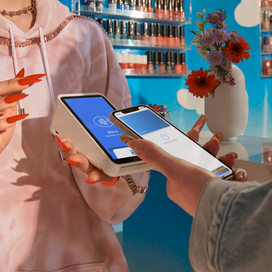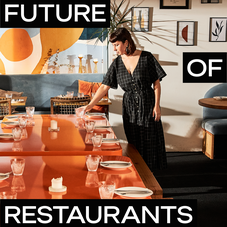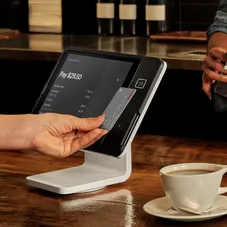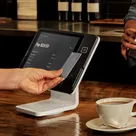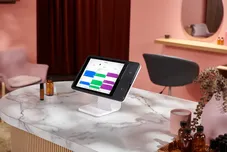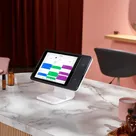Table of contents
Of all the global retail sales in 2020, 18% were online purchases. This is set to rise to almost 22% by 2024. You might think that operating your store online means there’s no merchandising to do, or no way to create ambience. That’s not true. In fact, it presents a new challenge to find interesting ways to attract customers and set the stage for the products you sell. Online visual merchandising is your new best friend as you look to create memorable shopping experiences for customers.
What is online merchandising?
Like traditional visual merchandising, online merchandising is a strategic way of arranging and displaying your products. In ecommerce merchandising, it’s about creating visual elements to enhance the shopping experience. It begins with professional photos for products. Clever branding is also key. From there, it expands with ratings and customer photos. It’s all about ensuring customers add to cart and checkout. You can track customer behaviour through their shopping journey and use that information to tweak your online merchandising strategy.
5 benefits of online merchandising
1. Greater control over display to enhance experience
With online retail merchandising, you can make customers feel welcome while they shop. It’s your opportunity to create interest and guide customers to specific items. With you taking full control of the experience, you can customise your pages based on what customers want, which allows you to maximise engagement, revenue and performance.
2. Increases engagement
Many online retailers spend big on search engine marketing (SEO) and social media in a bid to drive traffic to their stores. The purpose of this activity is to expand the top of the funnel. However, it doesn’t mean an increase in quality. Not every user attracted via these methods will engage. Without engagement, you reduce profitability and increase custom acquisition costs.
You can increase engagement by drawing them in with something of interest and providing them with a clear view of the product. This is how you start nurturing visitors towards sales. It’s about placing the right products in the right place on your site. It improves click-through, which increases the likelihood of sales.
3. Increases retention
The competition for online retailers is fierce, so you don’t have long to hook someone once they land on your site. Data-driven ecommerce merchandising will help increase the length of time visitors spend on your site, which increases their likelihood of spending. The more products a visitor views, the more committed they are to your store. Even if they don’t purchase on their first visit, they are more likely to return another time.
4. Reduces the bounce rate
High-quality online merchandising can prevent first-time visitors from leaving too quickly. It increases both your click-through rate and an increase in your average order value.
5. Increases conversions
While online merchandising is useful for setting the tone for visitor experiences, the ultimate goal is increased performance. You want to boost your sales and increase your profitability. That’s what all businesses want, but you can use ecommerce merchandising to increase conversions and make your business more efficient. When you have an automated solution, you will have better results. More importantly, the effort is minimal. Analytics help you understand shopping patterns and give you an insight into what customers are looking for. You can use that information to enhance your online visual merchandising. When you effectively increase the top of your funnel, it results in bottom of the funnel improvements.
Online merchandising VS in-store merchandising
Both online retail merchandising and in-store merchandising rely on the five Rs. It’s all about having the right product in the right place for the right price and the right quantity at the right time. You can break merchandising as a whole down even further – shelf management, pricing, recommendation, and product mix. These translate for both in-store and ecommerce merchandising. The same forces are at work, but the major difference is online merchandising is made easier by fact-driven data that informs your decisions.
Main elements of online merchandising
1. High-quality photos
The biggest tool in your online merchandising arsenal is product photos. It provides customers with the details of the product. It’s great to have professional photos, which highlight the features, but it’s just as important that customer photos are available. By having product reviews from customers on the product’s page, potential buyers can see real images, read real reviews, and get a better feel for what they’re buying. It helps build trust too.
2. Customer experience
Building on the last point, having user-generated content is a great way to build consumer trust and highlight real-life experiences. This includes photos, reviews, and videos as well. It’s the most authentic way to show potential buyers the truth from existing buyers. You can add these to the product page, visual displays and even use them in email marketing.
3. Aesthetic design
Your website design is how you grab attention. It’s what draws customers in, makes them comfortable, and inspires confidence in your brand. You want them to trust you and feel safe purchasing and your design is a major part of that. Your website aesthetic is one of the most important aspects of influencing shopper behaviour.
4. Mobile optimisation
More than online half of retail sales are made from mobile phones. Your website must be mobile optimised and responsive. Images, reviews, and product descriptions should be as easy to read and load on a mobile as they are on a desktop. That will mean marketing across devices.
5 online merchandising tips
1. Storytelling
Online merchandising done well is focused on telling the brand story and a browsing experience that encourages purchase. You can curate their path with impulse buys and products beyond what initially brought them to your site. There are several ways to do this, but a particularly efficient option is to use customer photos alongside pieces of your brand story along with quotes.
2. UGC
User-generated content is important enough that it’s worth mentioning again. Shoppers view it as social proof; it’s what makes them positively respond to things others enjoy. Or to avoid what someone else dislikes. Customer photos appeal to people who trust what peers say; it’s another layer to customer reviews. You can directly channel customer comments from social media and highlight them on your website.
3. Customised experience
A customised shopping experience is one of the ways in how online merchandising differ from in-store. Online merchandising allows you to cater to the individual shopper. You can prompt customers to define their preferences and use that information to customise their experience to show relevant products, increasing conversion rates. There is an added benefit to this, the more information you learn the more you can improve online merchandising moving forward.
4. Product descriptions
A product description should aim to achieve two things. It should provide customers with enough detail to make them feel confident about making a purchase. It needs to detail how the product is used and how customers will benefit from it. Further, you should provide suggestions as to how or when it could be used. It’s easy to remember if you think of it as writing FAB statements– features, advantages, and benefits. Your product description should clearly communicate every product’s features, benefits, and incentives.
5. Pages
Your homepage is the first page visitors see. You can personalise this based on the country or area a user comes from. Your homepage should include a mission statement, about us section link, sign up link, promotional offer details, calls to action, and images of your most popular products or services. What product is your highest converting product? That’s what you showcase.
When it comes to product pages, you need 360-degree view images of the products, detailed descriptions, videos or demos, product specifications, and user-generated content. This is also your opportunity to upsell by cross-selling products. You can include add-ons that go with said product. You should also group products together on pages to make it easier to shop. It’s all part of the online merchandising journey.
Every year, new strategies emerge, and techniques evolve. The purpose of online merchandising is to attract customers and encourage them to spend on your ecommerce site. As it’s a visual technique, you must ensure it looks the same on every device. Consistency is an important aspect of online visual merchandising. You can get started with your online shop and ecommerce merchandising with Square.
![]()


